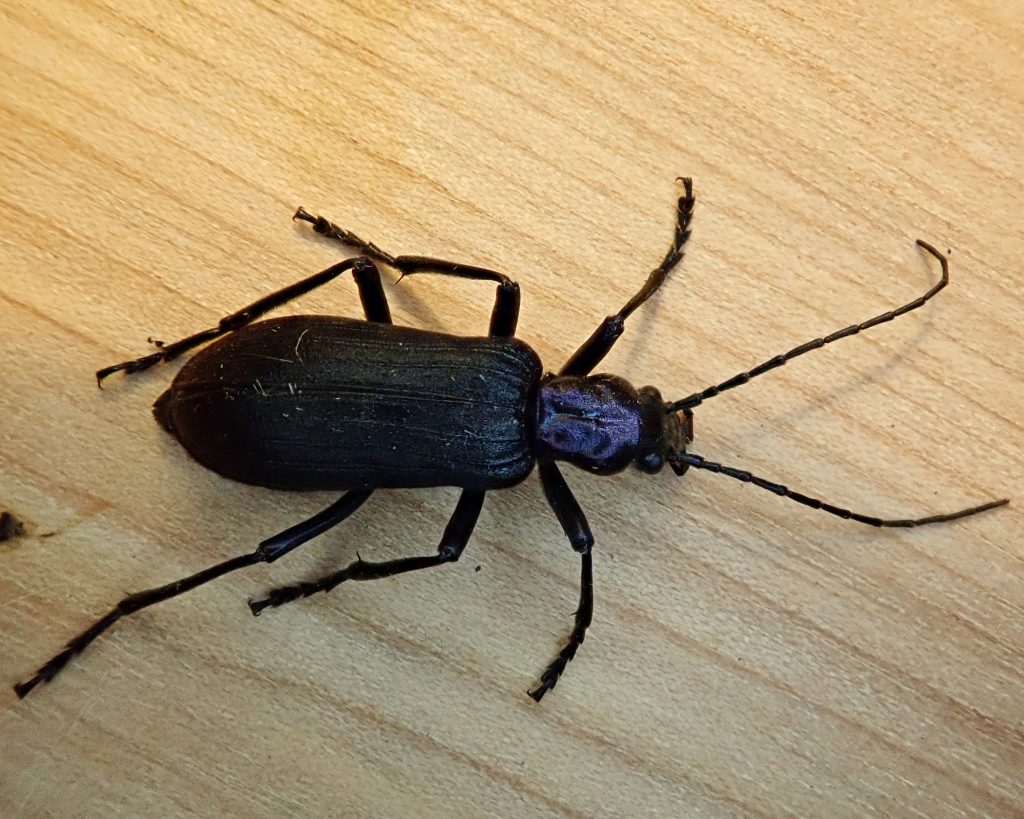
Ditylus gracilis is a member of the family Oedemeridae, also known as false blister beetles, because they have a strong superficial resemblance to many members of Meloidae (blister beetles), and also contain cantharidin, the chemical that causes said blistering (and which has seen human usage as both a topical pseudo-aphrodisiac and a wart remover). It has been proposed that the common name of this family be changed to the less dismissive and more accurate ‘pollen beetles’, because that is the primary food source of the majority of adults in this family.
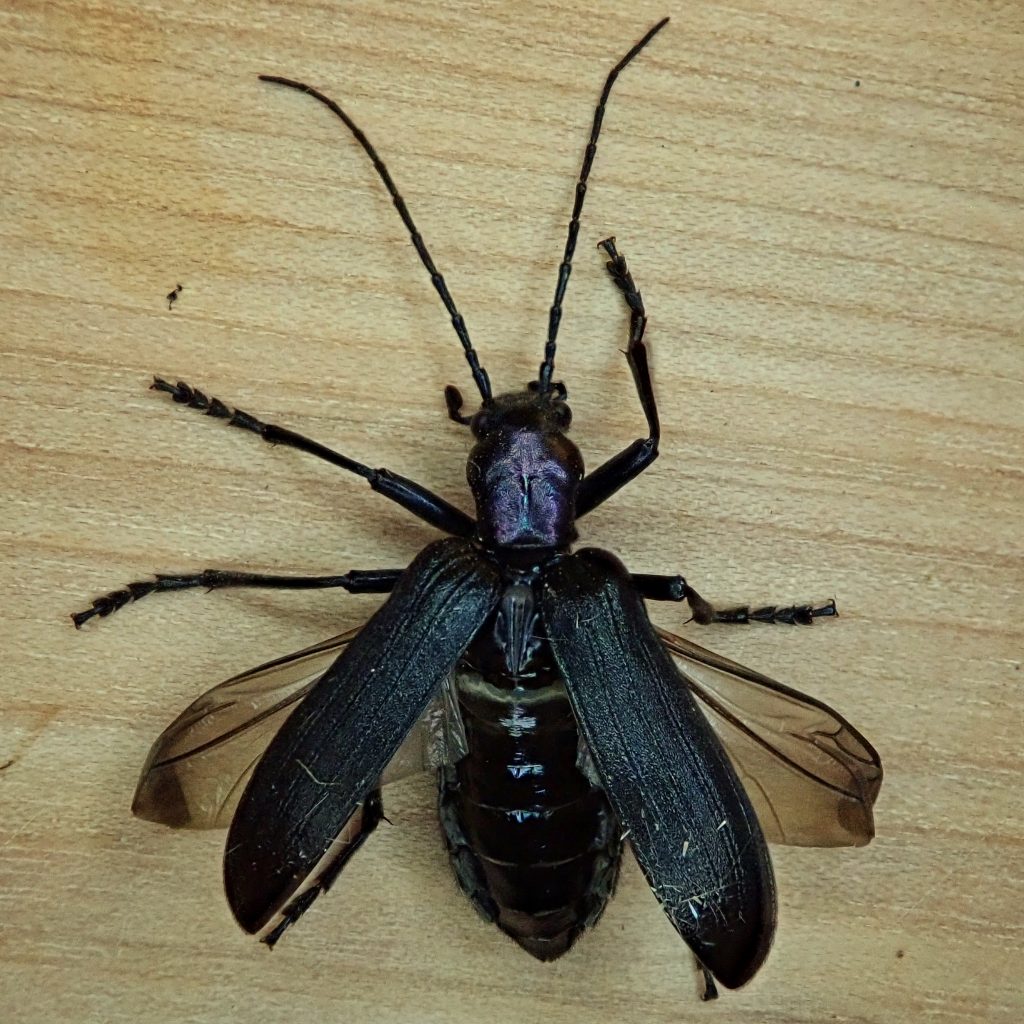
Oedemeridae can be distinguished from other beetle families by this combination of characteristics- pronotum widest near the front, narrower than the elytra at the rear, and lacking a margin on the lateral borders; tarsal formula (the number of segments in the tarsi, starting with the front pair of legs) 5-5-4; front coxal cavities open. With the exception of the width and narrowing of the pronotum these traits can only be accurately determined with magnification.
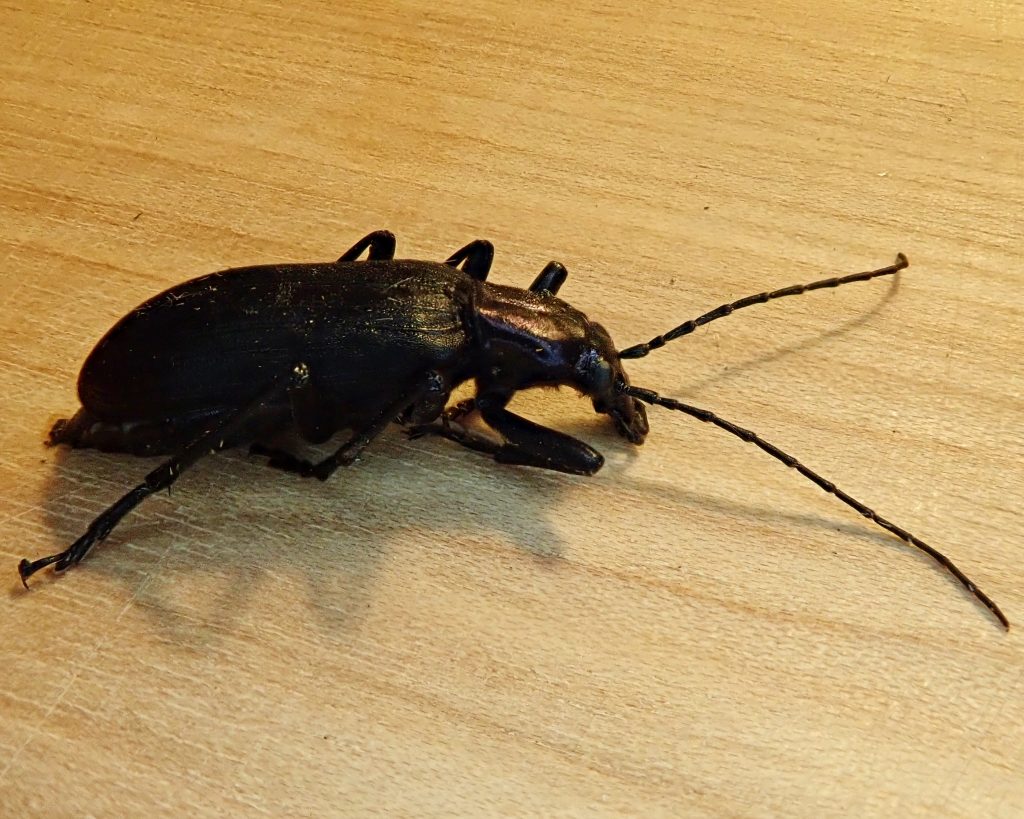
Ditylus as a genus can be differentiated from other Oedemeridae by having their antenna set in front of the eyes, two spurs on the tibia of the front legs, and a stout, black body. All of this was stuff I had to learn last May, whilst attempting to identify this beetle. And all of it I had to look up again when I went to profile this beetle, because my brain is a sieve, and I am not a coleopterist.
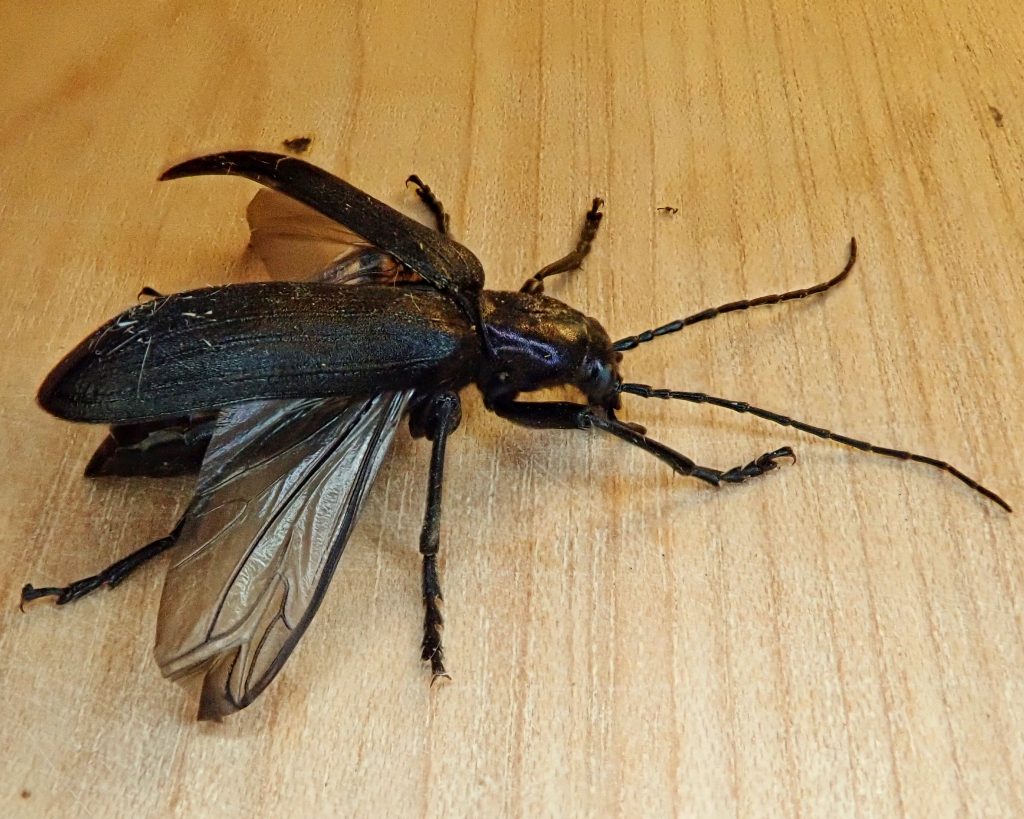
Ditylus gracilis is diurnal, but occasionally comes to lights, as this one did while I was mothing at Canyon Creek in Skamania County, Washington. They are often found in daylight feeding at flowers, or crawling beneath bark. Their larvae only feed on decaying wood, so they are not considered to be an economic pest. In fact they are useful pollinators, and recyclers of downed timber.
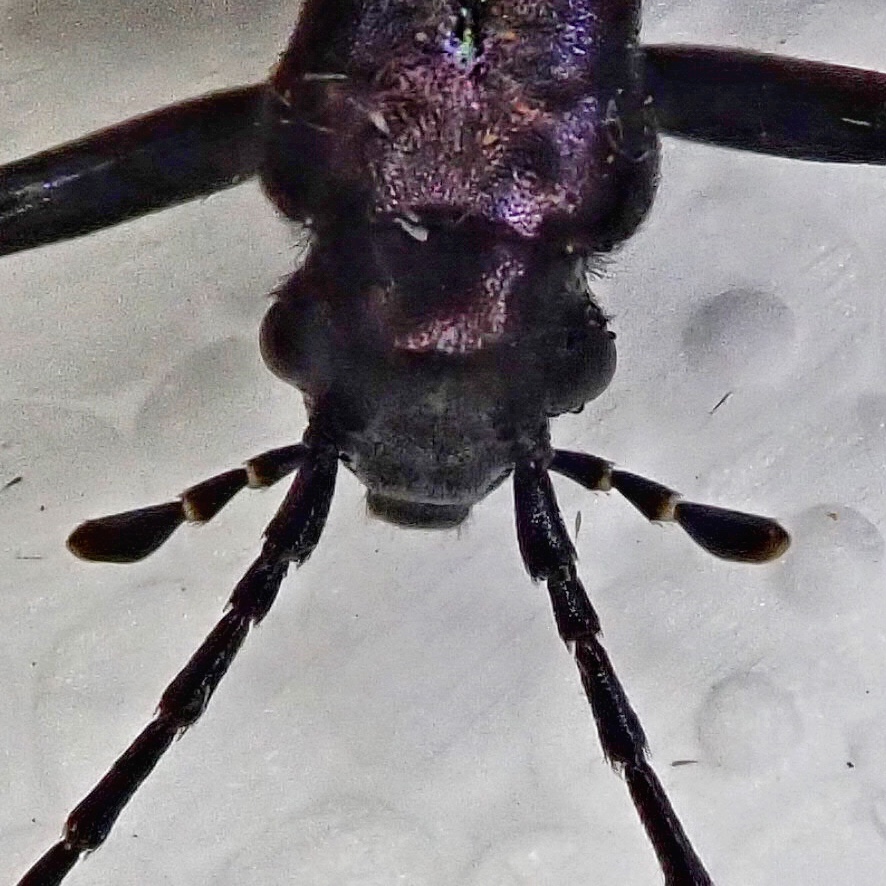
Description– Fairly stout black beetle, 15-21mm long, somewhat glossy with metallic, purplish to greenish iridescence, especially noticeable on pronotum; pronotum widest at the front, narrower than elytra at the rear, with noticeable bumps on each side near the front; antennal segments 4-10 elongated, >4/1 ratio;
Similar species– Positive identification of almost anything in Oedemeridae requires magnification and a key (and probably a glossary for the uninitiated; This will get you started, but it is far from complete); D. quadricollis has broadened antennal segments 4-10, <3/1 ratio, and is duller black without purple iridescence.
Habitat– Moist to mesic coniferous forests.
Range-Endemic to NW North America; found west of the Cascades in our region
Eats– Larva feed on decaying wood, primarily Western Hemlock, Douglas Fir, and Western Red Cedar for this species. Adults eat some wood, but are primarily pollen feeders.
Eaten by-The presence of cantharidin probably prevents most predators from eating more than one, but they do not have warning colors (aposematism).
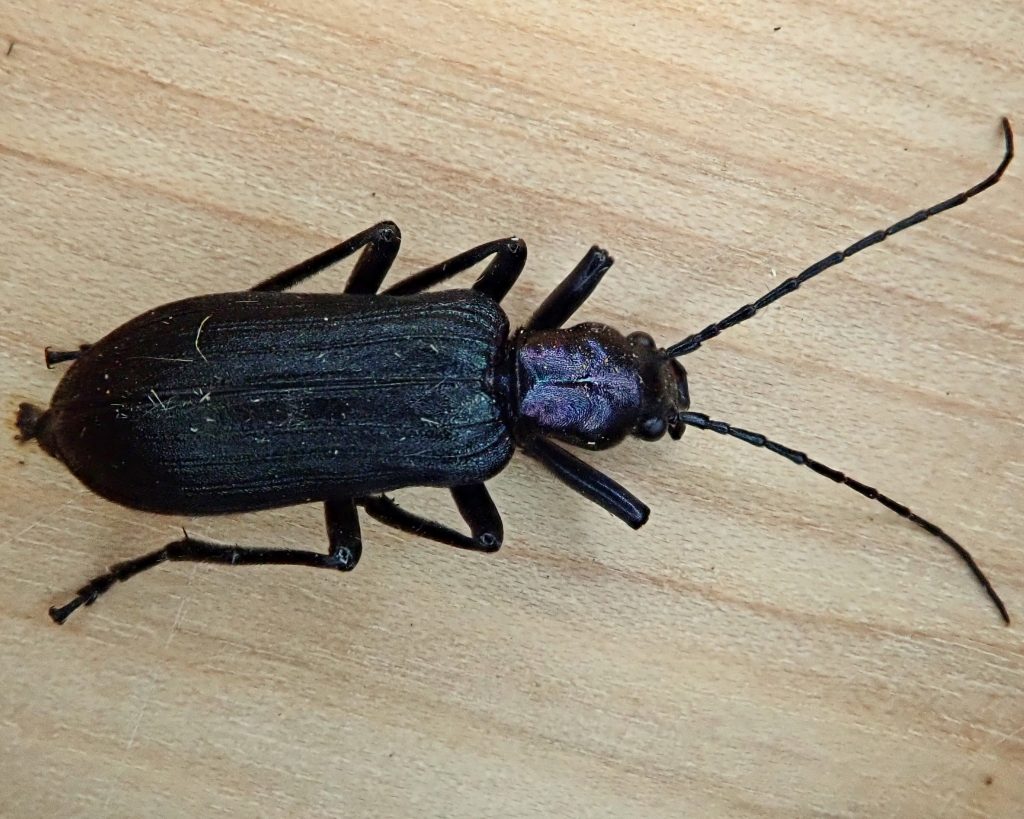
Reproduction– Little is known for sure about the breeding habits of anything in this genus, but it appears that ovipositing happens in summer in swampy, or at least damp, areas with downed timber. Larvae may take 3 years to reach adulthood. In the final year they overwinter as pupa and emerge as adults in the spring.
Adults active-May to September
Etymology of names– Ditylus is from Greek and roughly means ‘two humps’, and references the raised humps on either side of the pronotum. The specific epithet gracilis means slender in Latin, and LeConte implies that this is because this species is more slender than other Ditylus, but it may have to do with the slender antennal segments, which he also notes.
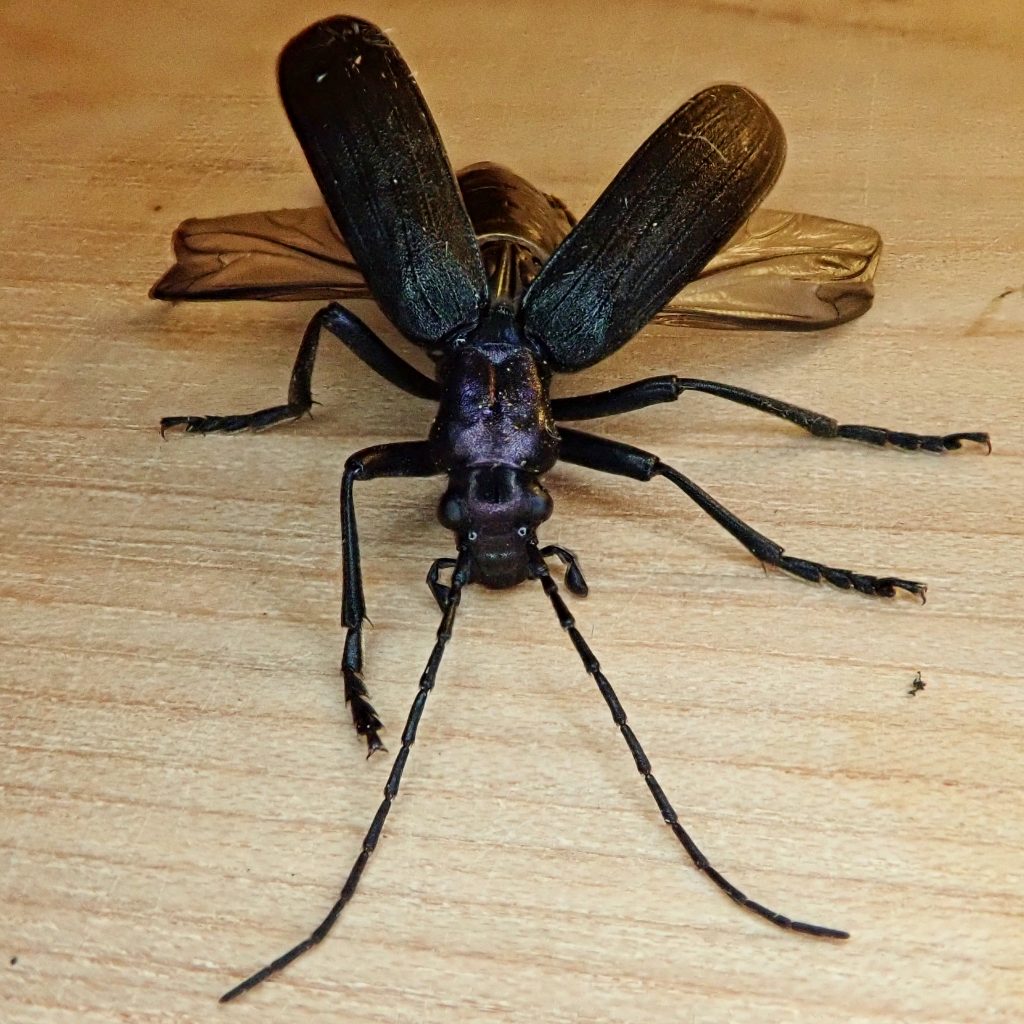
Species Ditylus gracilis – BugGuide.Net
https://bugguide.net/node/view/119908
Entomology Glossary: Huge List Of 578 Insect Terms
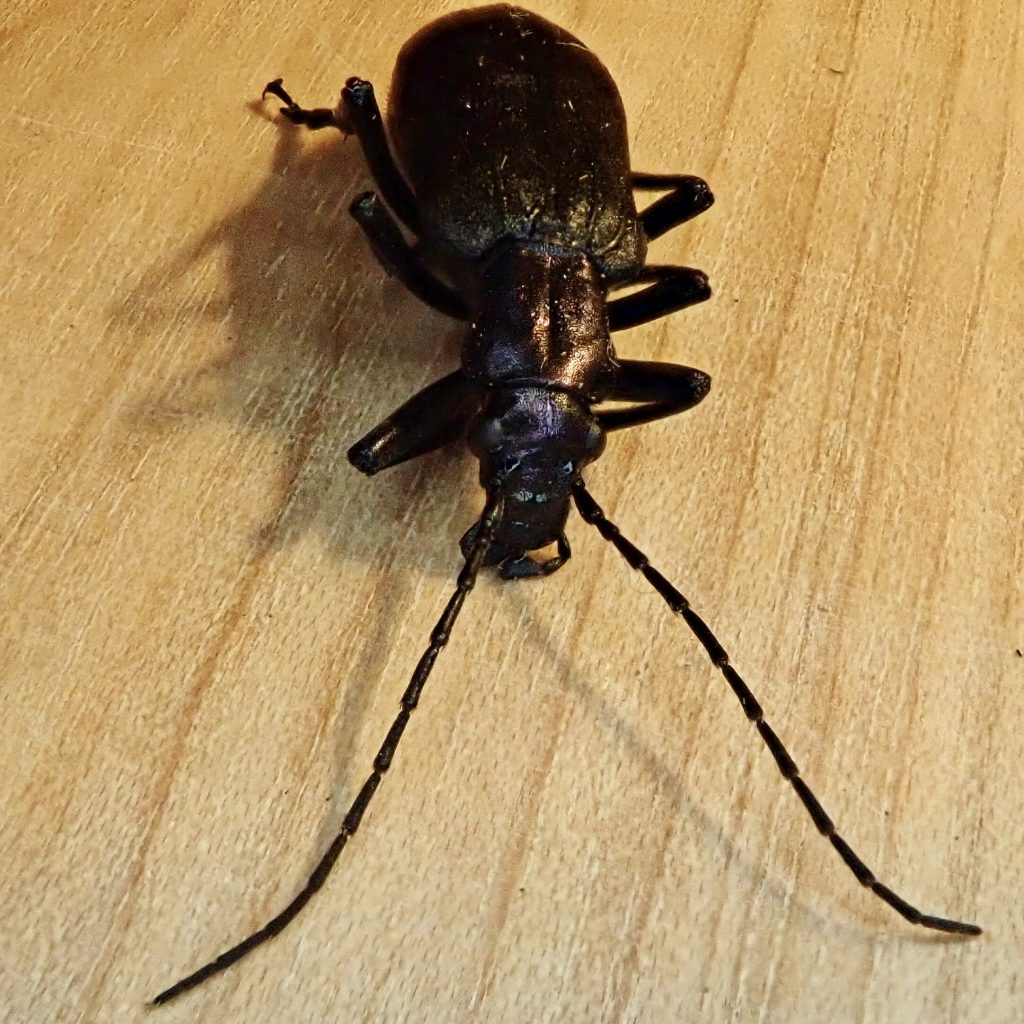
This looks a lot like a beetle I see consistently on the trails in Arizona, so I looked up the relationship. Your beetle is:
Order Coleoptera (Beetles)
Suborder Polyphaga (Water, Rove, Scarab, Long-horned, Leaf and Snout Beetles)
No Taxon (Series Cucujiformia)
Superfamily Tenebrionoidea (Fungus, Bark, Darkling and Blister Beetles)
Family Oedemeridae (False Blister Beetles)
Subfamily Oedemerinae
Tribe Ditylini
Genus Ditylus
Whereas my beetle is:
Order Coleoptera (Beetles)
Suborder Polyphaga (Water, Rove, Scarab, Long-horned, Leaf and Snout Beetles)
No Taxon (Series Cucujiformia)
Superfamily Tenebrionoidea (Fungus, Bark, Darkling and Blister Beetles)
Family Tenebrionidae (Darkling Beetles)
Subfamily Tenebrioninae
Tribe Amphidorini
Genus Eleodes (Desert Stink Beetles)
Continues to amaze me what number and variety of different species there are!
I love the “exploded view!”
Yes, wasn’t that cool! One of my favorite bug photos!
I’m having so much fun learning about real things I never ever would have even noticed before I encountered this blog.
Just as I am congratulating myself on knowing what a protonum, er pronotum (still can’t spell it) is, I get hit with elytra and coleopterist.
I’m laughing and learning.
Pseudo-aphrodisiac?!? Wink
Thanks for the appreciation, Ray! Glad you’re enjoying it.